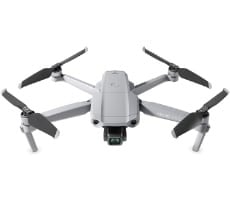Alienware Area-51m Review With Benchmarks And Teardown
Battery Life - How We Test:
Our custom HotHardware video loop test takes a 1080p HD video with a 16Kbps bit rate and loops it repeatedly, with 1 minute break intervals in between. A timer log file increments minutes of up-time, every minute -- along with the grand total -- before system shutdown is stored and logged. This is a lighter-duty test that is still a bit more strenuous than many office productivity tasks. During the test, we keep Windows 10 Quiet Hours enabled and the display has been calibrated with a meter on pure white screens to as close to 115 lux as possible. For the average laptop this is somewhere between a 40 - 60% brightness setting. Because laptop displays significantly affect power consumption and battery life, it's important to ensure a level playing field with respect to brightness of the display for battery testing. And, since many laptop displays vary in brightness at each respective setting in Windows, this calibration with a meter is critical to ensure all displays are set to as near identical brightness output as possible, before running battery tests.
Regardless, as you might have guessed, battery life is not a strong suit for a machine as powerful as the Alienware Area-51m, but we'll let the numbers speak for themselves...
Alienware Area-51m - Of Acoustics & Thermals
That said, if you're just browsing the web, watching movies or performing some other lower-end workload tasks, you'll barely hear the machine above ambient room noise levels. Conversely, if you decide to overclock or set the machine's thermal profile to "Performance," be prepared to have your eardrums lovingly assaulted.
Thermally, you'll be pleasantly surprised that the Area-51m isn't a complete nuclear reactor, despite our system's 5GHz Intel octal-core CPU and desktop class GeForce RTX 2080 GPU. On the top area of the machine, the highest thermal readings we pulled were only around 85 - 90ºF, while bottom areas only peaked around 95ºF during continuous loops of the 3DMark Port Royale ray tracing benchmark. The warmest areas of the machine is the extended rear cowling area where the primary exhaust vents reside. Here we saw temps approaching 115ºF or so, which is starting to get toasty. However, you're likely not going to be in significant contact for any length of time with this area of the machine and it's certainly not that warm to the touch regardless.
To bottom line it: you're going to want to keep the Area-51m's bottom, side and rear ventilation areas open and free from obstruction but other than that, thermally and acoustically, it's relatively well-behaved for such a beast of a machine.
Alienware Area-51m Overclocking
On the GPU side of the equation, however, there was more to work both thermally and with respect to clock speed...











